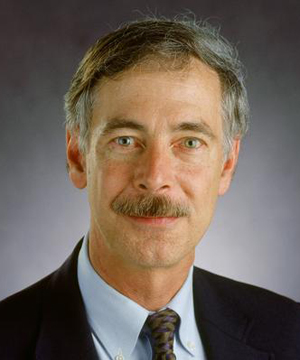UCSD Cell Phone Pioneer Elected to National Academy of Engineering
San Diego, CA, February 12, 2007 -- If you like the slim cell phone that you hardly know is in your pocket or purse, one of the many people you have to thank is Peter Asbeck, an electrical engineer from the UC San Diego Jacobs School of Engineering. And while you’re at it, congratulate him on earning one of the highest professional distinctions possible for an engineer – election to the National Academy of Engineering (NAE).
|
Peter Asbeck’s technical innovations have made their way into about 95 percent of the approximately one billion cell phones sold in 2006. Without the technology he pioneered – heterojunction bipolar transistor or HBTs – we might be walking around with cell phone batteries the size of bricks. Asbeck’s work is also influencing the field of optical networking, and it will likely turn up in many of the uncharted regions of our wireless, handheld future.
HBTs amplify cell phone signals to the point that they are strong enough to travel from a cell phone antenna to the closest cell phone tower. As HBTs have improved, cell phone batteries, and thus cell phones themselves, have shrunk.
“A lot of the battery drain in a cell phone is determined by how good the HBT is. The HBTs that Peter has developed over the years are just the best, by leaps and bounds,” said Larry Larson, a professor of electrical and computer engineering at the UCSD Jacobs School of Engineering and one of Asbeck's long-time colleagues.
Peter Asbeck received his Ph.D. from MIT in 1975. He worked at Rockwell International Science Center from 1978 until he joined the UCSD faculty in 1991. It was at Rockwell that Asbeck began developing HBTs. At UCSD, he and his students have improved HBT performance and extended applications.
Asbeck heads UCSD’s High-Speed Device Group, which works on HBTs and other advanced devices, as well as power amplifier architectures for wireless communications and opto-electronic interface circuits. Asbeck is actively involved in UCSD’s Center for Wireless Communications (CWC), and the UCSD division of the California Institute for Telecommunications and Information Technology (Calit2). He also holds the Skyworks Chair in High Speed Semiconductor Devices and Circuits. The chair was created in 2002 and funded through Skyworks' then-parent company Conexant's commitment to Calit2.
“There is not a particular patent or paper to point to. Peter publishes 5 or 10 papers a year on power amplification and related issues. Others in the field look forward to seeing Peter’s papers at the major conferences because they always know that whatever is hot in the power amplifier area is going to be done by Peter and his group,” said Larson.
In the late 1990s, Asbeck founded the UCSD Power Amplifier Workshop which grew and grew until the IEEE folded it into a much larger conference called “Radio Wireless Week.”
“Within this broad IEEE annual event, Peter’s power amplification workshop is one of the main features,” said Larson, who has been taking turns chairing the workshop with Asbeck.
Research on HBTs and related power amplifiers is far from done; and Asbeck and his students remain at the cutting edge. One of the newer applications for HBTs is optical networking.
The problem in optical networking is similar to that in cell phones: you have to send a signal over a very long distance. Instead of amplifying cell phone signals, HBTs amplify the electrical signals driving the lasers that create the light signals for fiber optic communications. On the receiving end of optical networks, HBTs strengthen the arriving light signals.
As engineers at UCSD and elsewhere look to incorporate optics into more and more aspects of computing and communications, HBTs are poised to play a critical role.
“The HBT is an area of great industrial importance. It is no exaggeration to say that the entire cell phone industry depends on the HBT,” said Larson.
Over the years, Asbeck has received industrial support for his work from Ericsson, Nokia, Skyworks, Motorola, Conexant, Rockwell International, Hughes Research Laboratories, and the CWC and Calit2.
National Academy of Engineering membership, according to an NAE press release, honors those who have made outstanding contributions to engineering research, practice, or education, including, where appropriate, significant contributions to the engineering literature. NAE members have pioneered new and developing fields of technology, made major advancements in traditional fields of engineering, or developed/implemented innovative approaches to engineering education.
Other Calit2 participants who are current members of NAE including Calit2 director Larry Smarr and ECE professor Jack Keil Wolf.
###
The NAE is a private, independent, nonprofit institution. In addition to its role as advisor to the U.S. federal government, the NAE also conducts independent studies to examine important topics in engineering and technology.
Media Contacts
Media Contact: Daniel Kane, (858) 534-3262, dbkane@ucsd.edu
Related Links
Skyworks Chair News Release
Jacobs School of Engineering
Peter Asbeck Website
High Speed Device Group
Radio Wireless Week
Power Amplifier Symposium


